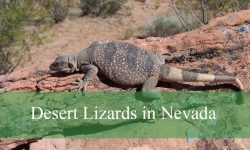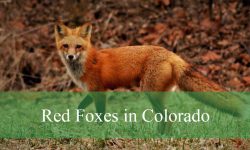Utah’s wildlands hold some of the most dramatic landscapes in the West, stretching from high alpine ridges to deep sandstone canyons. These rugged places are home to one of the continent’s most elusive predators: the mountain lion. Although they live throughout the state, most people will never see one in their lifetime. Their quiet movement, nocturnal habits, and incredible ability to blend into steep terrain make them nearly invisible despite their impressive size.
Yet the absence of sightings does not mean an absence of presence. Mountain lions move along ridgelines, follow deer trails, cross remote valleys, and patrol territories that stretch for miles. Their activities shape the very rhythm of Utah’s ecosystems. Understanding them means peeling back a layer of mystery surrounding a species that is both feared and admired.
This article explores the hidden facts about mountain lions in Utah that many people have never heard. From their sophisticated hunting strategies to their adaptive behavior across deserts and mountains, these insights reveal a predator far more complex and vital than most realize.
Understanding Mountain Lions in Utah

What Mountain Lions Really Are
Mountain lions, also known as cougars or pumas, are large solitary cats found across the Americas. In Utah, they thrive in environments ranging from the cool forests of the Wasatch and Uintas to the rugged sandstone plateaus further south. Their bodies are built for power and stealth: muscular limbs, a long thick tail for balance, large paws for silent steps, and sharp retractable claws used in hunting and climbing.
Their physical size varies, but Utah’s adult males often weigh more than one hundred pounds, with females slightly smaller. Their coats blend seamlessly with Utah’s rocks, soil, and vegetation, making them difficult to detect even in broad daylight. Their senses are highly developed. Night vision is exceptional, allowing them to hunt effectively at dawn, dusk, or full darkness. Acute hearing helps them detect slight movements in brush or snow.
Despite their imposing presence, mountain lions are extremely shy. They have evolved as ambush predators, relying on stealth and strategy rather than speed. Most encounters with humans occur because people unknowingly enter lion habitat, not because lions seek human interaction.
Why Utah Supports Mountain Lion Populations
Utah offers one of the most diverse habitat networks of any western state. Mountain lions thrive in areas that combine rugged terrain, abundant prey, and minimal human disturbance, and Utah provides all three across large landscapes. The state’s mixture of mountain ranges, thick forests, desert cliffs, and river corridors creates a variety of ecological niches for lions to occupy.
High-elevation forests support large populations of mule deer and elk, providing a steady food supply. Dense vegetation and rocky outcrops offer cover for ambush hunting. Canyons and foothills provide transitional zones where prey often concentrate, especially during winter. Even Utah’s deserts, though dry and seemingly harsh, contain pockets of habitat—cliffs, washes, and rubble slopes—where lions can find cover and prey.
Another major reason mountain lions flourish in Utah is the amount of available wilderness. Large protected areas, remote highlands, and broad forest networks provide enough space for lions to maintain extensive territories without excessive conflict or disturbance.
Where Mountain Lions Occur Across Utah
Alpine and Forested Mountain Zones
Mountain lions frequently occupy Utah’s high mountain regions. These areas offer abundant prey and rugged cover. Forested slopes, fallen logs, thick shrubs, and rock shelves give lions hunting angles and resting sites. In winter, elk and deer descend from the highest elevations into mid-mountain forests, making these zones particularly active for lion hunting.
Foothills, Canyons, and River Corridors
Much of Utah’s mountain lion activity occurs in foothill and canyon environments. These transitional zones concentrate prey species and provide dense cover for ambush hunting. Narrow canyons act as natural travel corridors. Lions may follow these routes for miles, using overhanging cliffs and brushy benches for concealment.
These are also the landscapes where lions are most likely to interact indirectly with humans. Homes built along canyon edges or foothill slopes often sit within natural lion pathways.
Desert and Plateau Regions
Although desert landscapes seem inhospitable, mountain lions navigate them with ease. Cliffs and mesas provide vantage points for hunting. Washes and ravines offer cooler microclimates and cover. Prey species like mule deer and bighorn sheep move through these landscapes, giving lions consistent food sources.
Seasonal changes influence where lions travel. Winter pushes both prey and predators to lower elevations, and sightings in valleys often increase during deep snow periods. During warm months, lions retreat into cooler forests and higher ridgelines.
Hidden Behaviors Most People Never Notice
Low-Visibility Movement and Territory Patterns
Mountain lions are masters of moving unseen. They often travel along ridgelines to scan valleys below. They cross canyons during low-light periods when their coloration blends with shadowed rock. They move through thick brush quietly, avoiding open areas unless necessary. Their territories vary widely depending on prey availability, but one cat may roam dozens or even hundreds of square miles.
Males maintain larger territories than females and patrol them methodically. Territory borders are marked with scratches, scent posts, and scrapes, all signaling ownership to other lions. Females share portions of their territories with offspring, adjusting routes as the young grow.
Specialized Hunting Strategies
Mountain lions rarely chase prey across open ground. Their style is built on surprise. They wait in cover, study deer travel paths, and position themselves for a quick, powerful pounce. A typical hunt may involve watching from above, stalking quietly downhill, and striking in a burst of controlled speed.
After making a kill, lions often drag it into shaded areas or under vegetation. They may cover it with sticks or debris to hide it from scavengers. This caching behavior allows them to return for several days.
Nocturnal and Crepuscular Lifestyle
Although they can be active at any time, mountain lions are most often on the move during early morning and dusk. This reduces exposure to humans and increases hunting success. Their night vision allows clear visibility in extremely low light.
In Utah’s foothills, increased lion movement at dawn and dusk aligns with mule deer patterns. This shared rhythm ties predator and prey together across seasons.
Anatomy Built for Stealth and Strength
Muscular Limbs and Silent Paws
The mountain lion’s limbs are built for powerful leaps. They can spring upward or forward in a fraction of a second, tackling prey with stunning precision. Large, padded paws muffle sound and distribute weight, helping them move across loose soil, slippery rock, or deep snow without losing balance.
Tail as an Essential Balancing Tool
A long, muscular tail is critical for navigating Utah’s steep terrain. It acts as a counterweight during quick turns, sprints, and leaps across angled surfaces. On narrow ledges or rugged boulder fields, this tail helps lions maintain stability.
Sensory Adaptations for Ambush
Mountain lions have exceptional night-vision capabilities. Their eyes contain light-sensitive cells that enhance visibility in near darkness. Their hearing is also highly acute, picking up subtle noises of movement through sagebrush or forest litter. These senses make them extremely effective ambush predators regardless of terrain.
Feeding Habits Across Utah
Dependence on Deer and Other Ungulates
Mule deer form the backbone of the mountain lion diet in most Utah regions. Lions track deer movements seasonally, shifting to lower elevations in winter and higher areas in summer. Elk, especially calves, also provide an important food source in some mountain zones.
Secondary Prey in Foothills and Canyonlands
When deer numbers fluctuate or terrain becomes challenging, mountain lions become opportunistic. They take smaller mammals including rabbits, raccoons, and rodents. In desert escarpments, they may hunt bighorn sheep or pronghorn when available.
Seasonal Caching and Feeding Patterns
During winter, when conditions are harsh, lions rely heavily on cached food. Snow makes travel difficult, so conserving energy is crucial. By dragging kills to sheltered areas and feeding over several days, they reduce the need for frequent hunts.
Reproduction and Life Cycle in Utah
Breeding and Denning
Mountain lions breed throughout the year, although most kittens are born in spring or early summer. Mothers choose den sites in secluded areas such as rock crevices, brush piles, dense timber, or cave-like shelters.
Kitten Development
Kittens are born blind and heavily dependent on the mother. As they grow, they begin to accompany her to kills and learn hunting skills through observation. This early training shapes their future success.
Dispersal of Young Lions
Once young lions reach maturity, they disperse to find new territories. Young males tend to travel greater distances, sometimes crossing highways, open valleys, or unexpected places. Young females typically settle closer to their birthplace.
Mountain Lions Across Utah Landscapes
High Mountains and Forested Ridges
These are strongholds for mountain lions. Ample prey, natural cover, and minimal disturbance make high mountain regions ideal for both hunting and raising young. Snowpack influences winter movement, often concentrating lions in mid-elevation forests.
Foothill and Canyon Edges
This zone is the interface between human activity and lion habitat. Deer often pass through these regions, followed closely by lions. Because of this, many sightings occur where foothill neighborhoods meet wildlands.
Desert Plateaus and Rims
Utah’s deserts may seem unlikely mountain lion habitat, yet they contain cliffs, mesas, and hidden pockets that provide excellent cover. Lions move through these areas during night, using cooler temperatures and shadowed terrain to navigate long distances.
Seasonal Rhythms in Utah
Winter
Winter shifts prey movement downward, bringing lions closer to foothills and valley edges. Deer are easier to track in deep snow, but travel may be more difficult for lions. Valley sightings often increase.
Spring
Spring vegetation attracts prey herds upward. Lions respond by moving into greener regions and reestablishing feeding patterns. Mothers with young kits choose areas with plentiful cover and food.
Summer
Lions travel more widely during summer. Prey spreads across the landscape, and lions follow them into cooler, higher elevations. Human recreation peaks during this season, but lion activity is mostly nocturnal.
Autumn
As deer and elk prepare for winter, lions take advantage of increased prey movement. Autumn is also a period of intensified feeding and territory reinforcement before winter sets in.
Interaction With Other Wildlife
Role as an Apex Predator
Mountain lions help regulate deer numbers, indirectly shaping vegetation and maintaining ecosystem balance. By targeting weak or sick individuals, they improve prey herd health.
Competition With Other Predators
Coyotes, bears, and bobcats may compete for some food resources, though lions typically dominate large prey. Scavengers often feed on leftovers from lion kills.
Indirect Interaction With Humans
Most human interactions occur unintentionally. Lions are generally wary of humans and retreat when detected. Encounters happen primarily along canyon edges, recreational trails, or near areas where deer congregate.
Myths and Misconceptions
Myth: Mountain Lions Are Common Everywhere
Mountain lions are widespread but not abundant. They occupy large territories, so their density is low even in good habitat.
Myth: They Regularly Hunt Humans
Such events are extremely rare. Lions avoid humans and attack only under specific and unusual circumstances.
Myth: They Only Live in Forested Zones
Mountain lions inhabit deserts, plateaus, canyons, foothills, mountains, and forests. Their adaptability is greater than most people assume.
Ecological Importance
Maintaining Prey Balance
By controlling deer and elk numbers, mountain lions shape plant regeneration and forest health. Their presence discourages overgrazing and supports ecological diversity.
Supporting Scavenger Networks
Carcasses left behind after feeding support species like birds of prey, coyotes, foxes, and insects.
Indicating Landscape Health
Healthy lion populations reflect large connected habitats, abundant prey, and resilient ecosystems.
FAQs About Mountain Lions in Utah
Are mountain lions dangerous?
They avoid humans and incidents are rare. Most encounters happen when people enter lion habitat without realizing it.
What should I do if I see one?
Stand tall, maintain eye contact, back away slowly, and avoid running.
What do mountain lions eat?
Primarily deer, but also elk calves, smaller mammals, and occasional birds.
Where are mountain lions most common in Utah?
Foothill canyons, mountain forests, and remote plateaus with strong deer populations.
How far do they travel?
Territories range from dozens to hundreds of square miles depending on prey and habitat.
Do lions live near suburbs?
Yes. Canyon-edge communities and foothill towns frequently overlap with lion travel routes.
Are kittens born in winter?
Most are born in spring or early summer in well-hidden dens.
How can people reduce encounters?
Avoid feeding wildlife, secure pets at night, and stay alert in foothill or canyon trails.
Conclusion
Mountain lions remain one of Utah’s most impressive and mysterious wildlife species. Their ability to move unseen across immense landscapes, their role as apex predators, and their remarkable adaptability create a presence far larger than what most people encounter. By understanding their hidden behaviors, seasonal rhythms, and vital ecological contributions, we gain a deeper respect for both the species and the wildlands they inhabit.
As Utah continues to grow and landscapes change, awareness and education are key to maintaining harmony between people and these majestic predators. The more we learn about them, the more clearly we see the importance of preserving the wild spaces they depend on.






